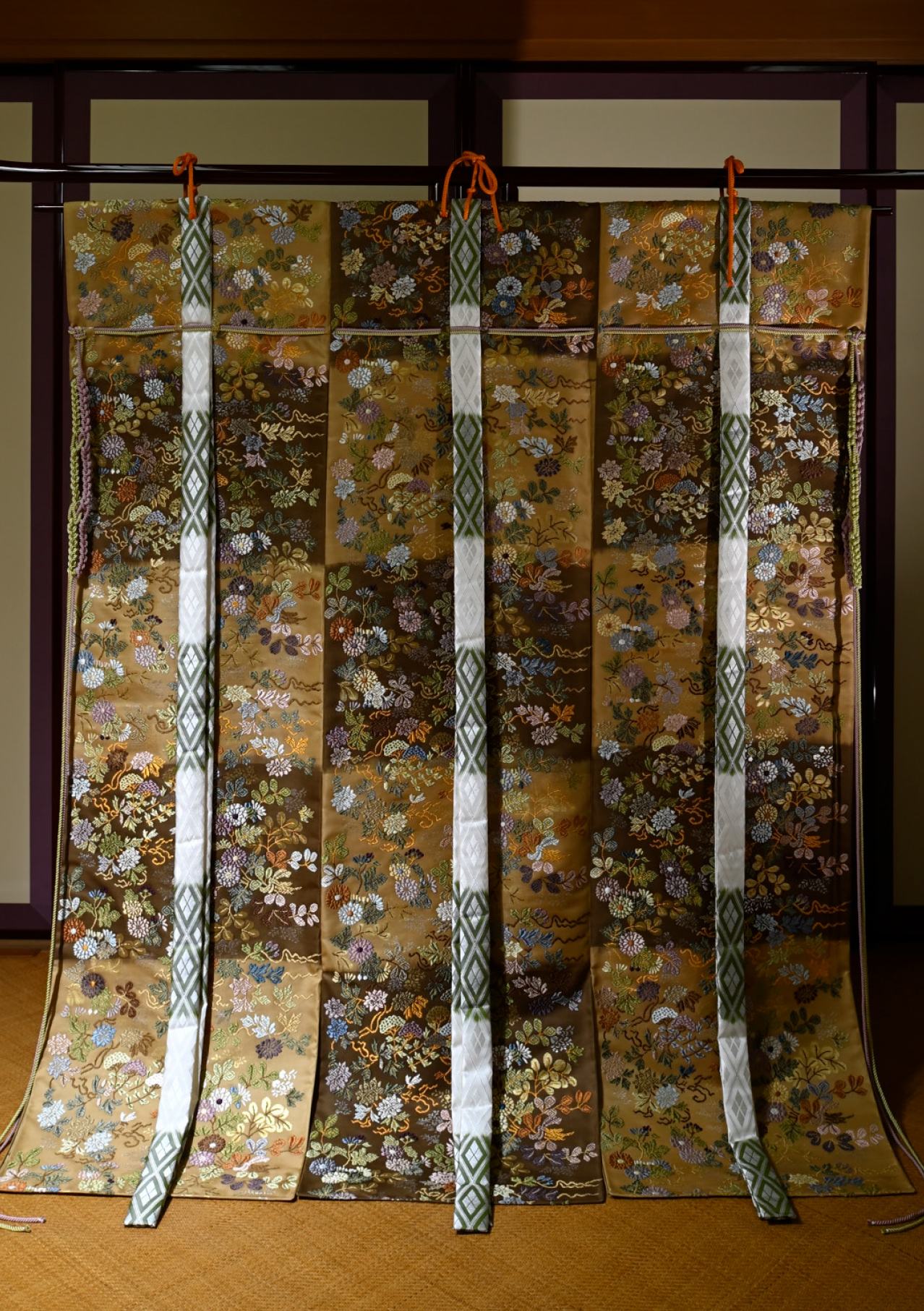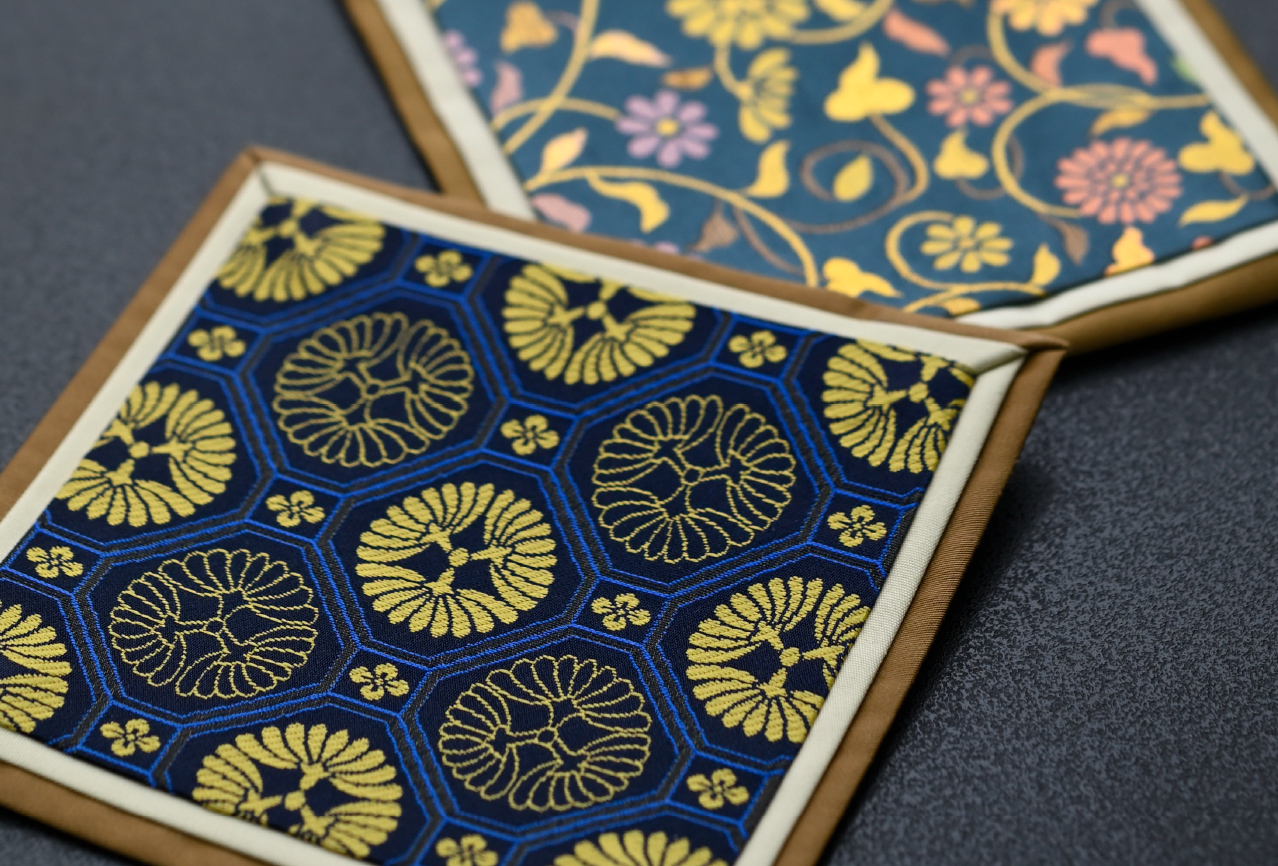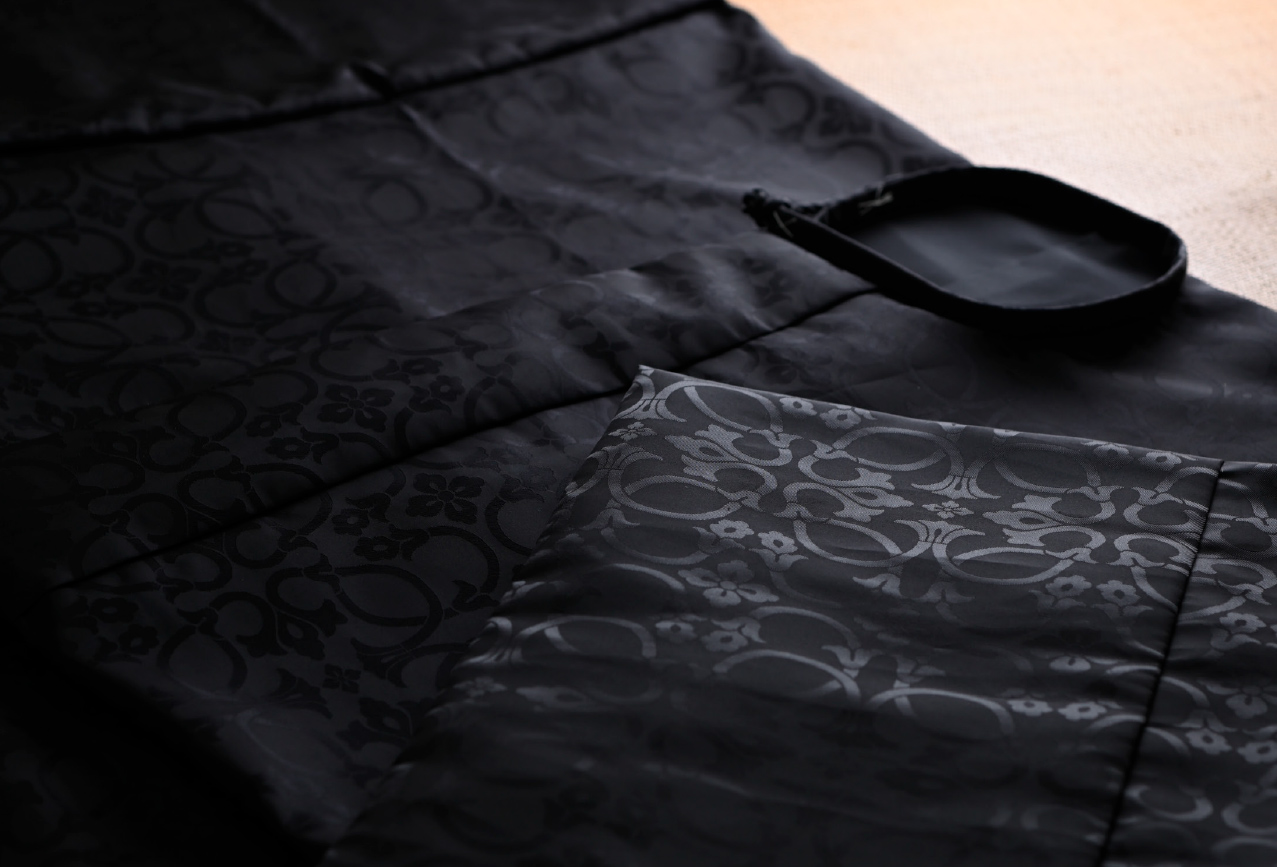京の神祇装束調度品 京都神祇工芸協同組合
KYO-JINGISHOZOKUCEREMONIAL CRAFTS AND FURNISHINGS 1
1
- 微細な刺繍がほどこされた贅沢な几帳。
日本の神道にまつわる神具や装束を指して、神祇装束調度品といいます。神具とは、神殿や三方などの木具類、鏡、御簾、几帳、旗、幕、雅楽器など、神殿の装飾品や神事の際に使用する道具のことをいい、装束は、衣冠、狩衣、冠、烏帽子など、神職・神官が身につける伝統的な衣服のことを指します。神宮・神社を訪れたときに目にするさまざまな装飾品・装身具を作る伝統工芸であるといえます。平安時代(8世紀後半)から明治維新(1868年)まで皇室の所在地であり、宗教の中心地でもあった京都では、多くの式典や行事、神事が行われたことからとくに発展し、その伝統は現在も脈々と引き継がれています。染織、縫製、木工、金工、漆芸など、分業で継承されている技術は、能装束や歌舞伎の衣装、料亭・旅館に飾られる几帳などにも生かされています。
Kyoto ceremonial crafts and furnishings (Kyo-Jingishōzoku) refers to sacred objects and costumes related to Shinto, Japan’s indigenous religion. Sacred objects include shrine decoration, offering stands, mirrors, screens, blindfolds, flags, curtains, musical instruments and other sacred objects used during rituals. Shinto costumes are traditional clothing worn by priests, such as kimonos and a variety of ancient priestly headgear and crowns. These traditional crafts can still be admired among ornaments and accessories when you visit a Shinto shrine today. From the Heian period (2nd half of the 8th century) to the Meiji Restoration (1868), Kyoto was the Imperial capital and religious center of Japan. Shinto crafts developed alongside this concentration of ceremonies, events and rituals, and the tradition continues in Kyoto today. Shinto religious crafts are characterized by a division of labor, with dyeing, weaving, woodworking, metalwork, and lacquer perfected by different craftsmen. This expertise is also utilized in Noh and Kabuki costumes and screens displayed in restaurants and ryokans.
 2
2
 3
3
- : 有職織物で仕立てたコースター。
- : 神職の礼装である袍(ほう)。
(1,2,3 すべて株式会社のむら)
1: A luxurious screen with fine embroidery. 2: A coaster tailored with Yusoku weaving. 3: Ho, a priest’s formal dress. (1,2,3 Nomura)

